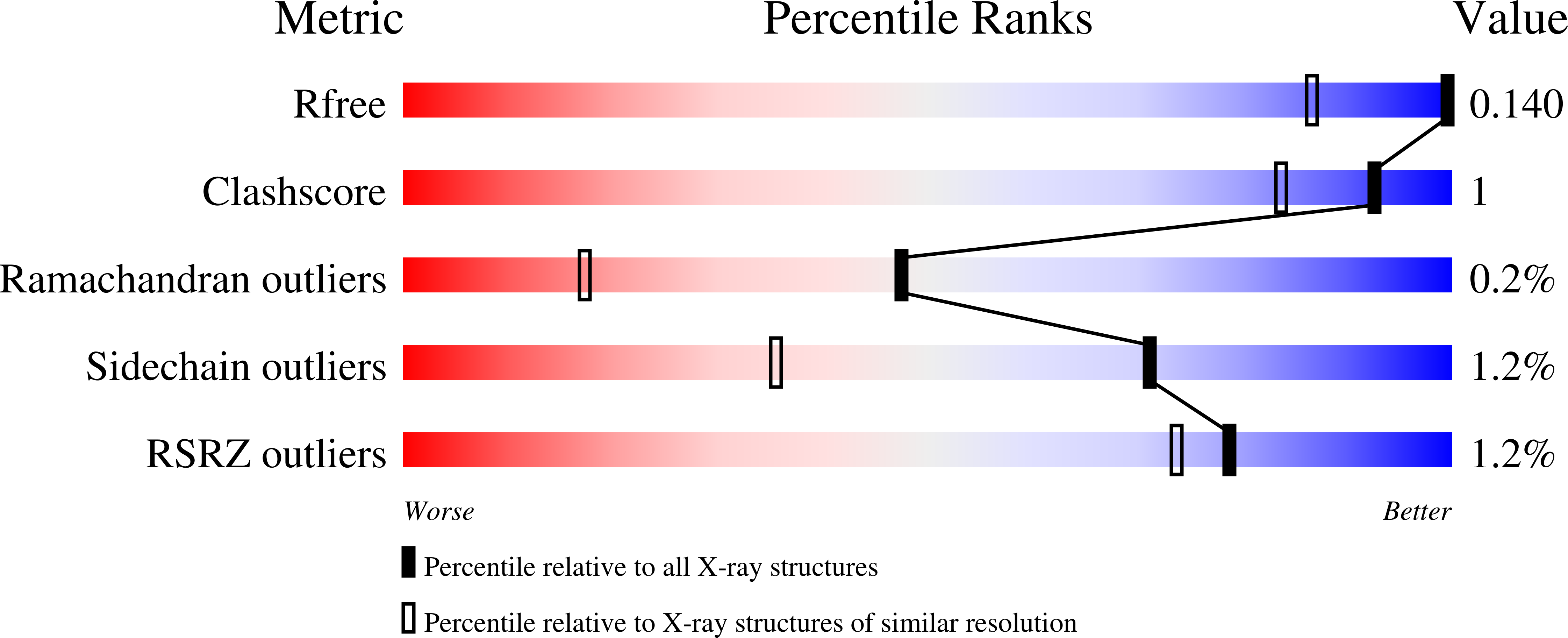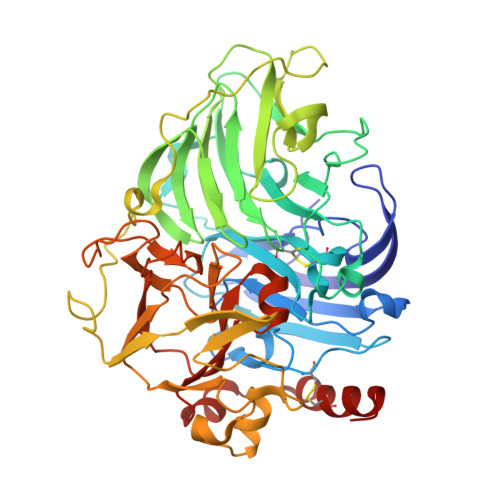The subatomic resolution study of laccase inhibition by chloride and fluoride anions using single-crystal serial crystallography: insights into the enzymatic reaction mechanism.
Polyakov, K.M., Gavryushov, S., Fedorova, T.V., Glazunova, O.A., Popov, A.N.(2019) Acta Crystallogr D Struct Biol 75: 804-816
- PubMed: 31478903
- DOI: https://doi.org/10.1107/S2059798319010684
- Primary Citation of Related Structures:
6RGH, 6RGP, 6RHH, 6RHI, 6RHO, 6RHP, 6RHR, 6RHU, 6RHX, 6RI0, 6RI2, 6RI4, 6RI6, 6RI8, 6RII, 6RIK, 6RIL - PubMed Abstract:
Laccases are enzymes that catalyze the oxidation of a wide range of organic and inorganic substrates accompanied by the reduction of molecular oxygen to water. Here, a subatomic resolution X-ray crystallographic study of the mechanism of inhibition of the laccase from the basidiomycete fungus Steccherinum murashkinskyi by chloride and fluoride ions is presented. Three series of X-ray diffraction data sets were collected with increasing doses of absorbed X-ray radiation from a native S. murashkinskyi laccase crystal and from crystals of complexes of the laccase with chloride and fluoride ions. The data for the native laccase crystal confirmed the previously deduced enzymatic mechanism of molecular oxygen reduction. The structures of the complexes allowed the localization of chloride and fluoride ions in the channel near the T2 copper ion. These ions replace the oxygen ligand of the T2 copper ion in this channel and can play the role of this ligand in the enzymatic reaction. As follows from analysis of the structures from the increasing dose series, the inhibition of laccases by chloride and fluoride anions can be explained by the fact that the binding of these negatively charged ions at the position of the oxygen ligand of the T2 copper ion impedes the reduction of the T2 copper ion.
Organizational Affiliation:
Engelhardt Institute of Molecular Biology, Russian Academy of Sciences, Vavilova Street 32, Moscow 119991, Russian Federation.

















